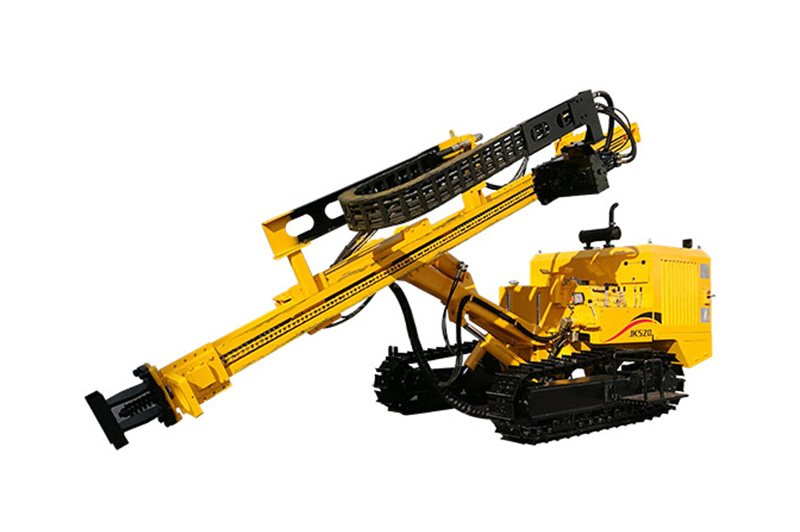In the world of mining, construction, and drilling operations, two commonly employed techniques are rotary drilling and down-the-hole (DTH) drilling. Each method has its own distinct features, advantages, and applications. In this comprehensive article, we will delve into the intricacies of these drilling techniques, highlighting their differences and benefits. So, let's begin our exploration of rotary and DTH drilling.
Rotary drilling is a widely utilized method in various industries that involve drilling deep holes. It involves the use of a rotating drill bit to penetrate the earth's surface and extract valuable resources such as oil, gas, minerals, and water. The process typically involves the following key components:
The drill string is the assembly of interconnected drill pipes, drill collars, and a drilling bit. It is designed to provide the necessary rigidity and strength to penetrate challenging geological formations. The drill string is also responsible for transmitting the drilling fluid, known as drilling mud, to the drill bit.
Drilling mud plays a crucial role in rotary drilling. It circulates through the drill string, carrying drill cuttings to the surface, lubricating the drill bit, and cooling it down. Additionally, drilling mud also helps in stabilizing the borehole walls, preventing cave-ins or collapses.
Rotary drilling rigs are equipped with a rotary table or a top drive system. These components facilitate the rotation of the drill string and provide the necessary torque to drive the drill bit into the ground. The rotation can be either clockwise or counterclockwise, depending on the drilling requirements.
Rotary drilling finds extensive applications in different industries. It is commonly used in oil and gas exploration, water well drilling, mining operations, and geotechnical investigations. The versatility and adaptability of rotary drilling make it a preferred choice for projects requiring deep and wide boreholes.

DTH drilling, also known as percussive drilling, is another widely employed technique in various industries. It involves the use of a pneumatic hammer, known as a DTH hammer, to create a hole in the ground. Let's explore the key aspects of DTH drilling:
The DTH hammer is a specialized tool that delivers powerful, repetitive blows to the drill bit. Compressed air or other suitable fluids are used to propel the hammer, which strikes the bit's impact surface. The energy transfer from the hammer to the bit enables efficient drilling in different types of rock formations.
In DTH drilling, the drill bit is designed to withstand the high impact forces generated by the DTH hammer. The bit consists of a series of tungsten carbide buttons or inserts that effectively crush the rock, creating a borehole. The choice of drill bit depends on the type of rock being drilled and the desired outcome.
An air compressor is an integral component of the DTH drilling system. It supplies the necessary compressed air to the DTH hammer, enabling the powerful percussive action required for drilling. The air compressor's capacity and pressure directly impact the drilling speed and efficiency.
DTH drilling is commonly used in mining operations, construction projects, quarrying, and geothermal drilling. It is particularly advantageous in hard rock formations where rotary drilling may face challenges. The ability to penetrate dense and abrasive rock formations makes DTH drilling a preferred choice in various applications.
Now that we have examined the fundamental aspects of rotary and DTH drilling, let's compare these two techniques based on different parameters:
When it comes to drilling speed, DTH drilling often outperforms rotary drilling. The percussive action of the DTH hammer allows for faster penetration through hard rock formations, resulting in quicker completion of drilling projects.
Rotary drilling is well-suited for drilling large-diameter and deep boreholes. It offers greater flexibility in terms of hole size, accommodating various project requirements. On the other hand, DTH drilling is more suitable for smaller to medium-sized holes, typically up to 17 inches (432 mm) in diameter.
Rotary drilling is highly versatile and can effectively handle different formation types, including soft, consolidated, and unconsolidated formations. DTH drilling, however, excels in hard rock formations where rotary drilling may encounter difficulties due to the nature of the drilling mechanism.
In terms of cost, rotary drilling is generally more expensive due to the complex equipment and drilling mud requirements. DTH drilling, on the other hand, is relatively cost-effective, particularly in projects involving hard rock formations, where it offers superior efficiency and productivity.
Both rotary and DTH drilling techniques have their own strengths and are suitable for specific applications. Selecting the appropriate method depends on factors such as formation type, project requirements, drilling speed, and budget considerations. By understanding the differences between rotary and DTH drilling, professionals can make informed decisions and optimize their drilling operations for improved efficiency and productivity.
In summary, rotary drilling is a versatile method used for drilling deep and wide boreholes, while DTH drilling excels in penetrating hard rock formations with its powerful percussive action. By harnessing the benefits of these drilling techniques, industries can drive progress and overcome geological challenges effectively.
So, whether you are embarking on an oil exploration project or constructing a new geothermal well, the choice between rotary and DTH drilling depends on your specific needs and objectives. Remember to consult with experts and evaluate the geological conditions to ensure the most suitable drilling method for your project.
Comments
Please Join Us to post.
0